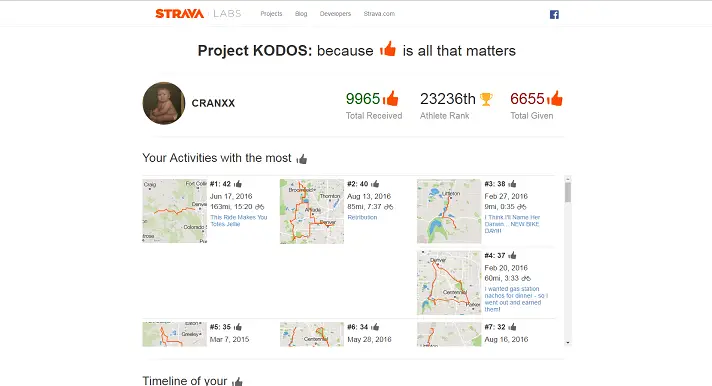
I’ve had a few bicycles in my time and used one helmet for a long time without replacing it. I wondered if I needed to replace it, so I did some research and thought I’d write this helpful article about why bicycle helmets expire.
So, why do bicycle helmets expire? Technically, they don’t expire. It is recommended to replace your helmet after 5 years as a recommendation, however, your helmet should be replaced sooner if it becomes damaged, or if there is wear and tear that inhibits safe use.
Now, there are few ways in which a helmet can be damaged where you would want to replace it. So, below I’ll explain what happens to a helmet when it should be replaced, I’ll explain the expiry laws in the USA, Canada, Europe, Australia, and New Zealand. As well as, how often you should replace your bike helmet.
What happens to helmets that causes them to need to be replaced?
Below is the full instructions on how to check each part of your helmet to see if needs replacing according to Helmets.org, and there are five parts of the helmet you should check in total:
1. Outer Shell
The plastic shell which covers the exterior holds the helmet together during a crash. If you know where the impact occurred on your helmet you can inspect that area, otherwise, look for any scratches or cracks in the outside shell. After a crash, because of the adrenaline, and shock some riders don’t recall hitting their hit.
Any cracks on the exterior indicate that the helmet should be replaced, as well as, any parts of the edge of the shell that are breaking off. Press into the helmet gently to see if it caves in a little bit. It should behave like a soda can and pop back out once you press it in.
A less expensive helmet will do this a little bit in some areas, but a lot indicates that the helmet needs replacing. Higher quality helmets are melted between the shell and the foam so there will be no way to press the outer shell down. If there are bumps and flat spots on the outer shell, this indicates an impact has occurred, and to inspect further.
Look for any signs of fading to the color on the outside of the helmet. If the paint is faded the plastic is likely not as strong, and could crack easily. A very faded helmet should be replaced.
2. The Inner Liner
- Remove the fitting pads. The fitting pads on the inside should be removed if you can. That way you can see the entire inside of the helmet.
- Inspect the inner liner. Inspect the styrofoam liner for any damage in the form of splitting or dents.
If you find any split or compressed areas on the foam, you should replace your helmet.
Expanded polystyrene is commonly used in bicycle helmets. The material is such that it will resume its shape slightly after being impacted. A helmet that has been impacted, however, has lost its ability to provide protection and should be replaced.
So, if you know your helmet has taken an impact, it is best to replace it immediately even if there are no signs of impact or abrasion. This is because it can be hard to detect impact marks.
There are newer helmet liners that can withstand multiple crashes such as EPP (Expanded Polypropylene). It is helpful to inspect the helmet in either case, but only replace it if you know it has had 2-3 impacts.
3. Buckle and Strap
- Wash out salt residue which shows as white water marks.
- Inspect the straps for any fraying edges, or stitching that is coming undone.
- Check the clip that clips the two straps under your chin. The most prone parts to break are the side tabs that clip into the female end.
If the clip closes but opens easily, or doesn’t remain closed then you should replace it. This is because if you crash your helmet won’t stay on.
4. Rear Stabilizer
This is only on some helmets. It is the part that rests at the bottom of the helmet, and is a different material to the plastic shell.
Ensure it is firmly attached to the helmet by using your hands.
If it is loose or damaged then you should replace either that part where possible or the whole helmet.
5. Standards Sticker
If your helmet has one of the following stickers: CPSC, ASTM, or Snell, and meets all of the above checks then your helmet is safe to use.
The above stickers are just for the USA. For other countries, please see the consumer protection department of your government for the specific labelling which your manufacturer should display on your bicycle helmet.
If there is no sticker or it has a different sticker to what it should be then you should replace your helmet. This is because it is too old to be considered safe, or does not meet the consumer protection laws in your country.
How often should you replace your bicycle helmet?
A helmet can sit on a shelf for more than 10 years and retain its impact resistance according to experimental research conducted by MEA Forensics, however, the Consumer Product Safety Commission recommends to replace a helmet after 5-10 years, and most helmet manufacturers recommend replacing a helmet after 2 to 10 years.
Therefore, helmets don’t technically have a shelf life, but the recommendation is to not use a helmet more than 5 years old.
How long do bike helmets last?
Cycle helmets last for up to 26 years, provided they aren’t involved in a crash according to the aforementioned study performed by MEA Forensics. In the study they took 770 donated bicycle helmets and subjected them to impact tests.
It was found that helmets retained their impact absorbing properties after 26 years.
But, we don’t recommend trusting a helmet that old to protect you. If you’re interested, you can check out some of our reviews and bike helmet buying guides.
How long do bike helmets last that have been in a crash?
Most helmets are made from expanded polystyrene, these types of helmets should be replaced if it has taken an impact. You should check through your helmet using the checklist above, even if your helmet did not take an impact. This is because, during a crash a person can be in shock and the adrenaline can make a person forget if they hit their head.
Newer helmets use multi impact resistant foam which can withstand repeated crashes. These can be replaced after 2-3 crashes, however, you should follow the manufacturer’s instructions.
Legally: do bike helmets “expire”?
There are legal requirements for the testing of helmets during manufacture in the USA, Canada, the EU, Australia and New Zealand. These ensure that a helmet is safe when bought by a consumer.
There does not appear, as yet, through our research to be any laws which explicitly state a time frame for when a bicycle helmet expires.
Laws in the USA
The recommendation put out by the Consumer Product Safety Commission is 5 to 10 years. You should look at the manuals provided by your helmet manufacturer for how long your helmet should last.
Laws in Canada
In Canada there is no information regarding when a helmet should be replaced, only that it should meet the safety guidelines, more information can be found on the Ministry of Transportation websites for your respective district.
Laws in Europe
In Europe there is no information about when a helmet should be replaced. There is more information regarding cycling laws and safety in Europe available on the European Commission website.
Laws in Australia and New Zealand
In Australia, there is no information available regarding if a helmet should not be used after a certain amount of time. The manufacturers’ specifications and guidelines laws can be found here. Similarly in New Zealand, no information can be found. Detailed information on helmet use law in New Zealand is available here.
Conclusion
To sum up, a helmet does not currently expire (based on the law and manufacturer specs) and can last a very long time, however, the general recommendation is to replace it every five years. There is a checklist you should go through on your helmet to ensure it is safe to use, and after it has been in a crash.






